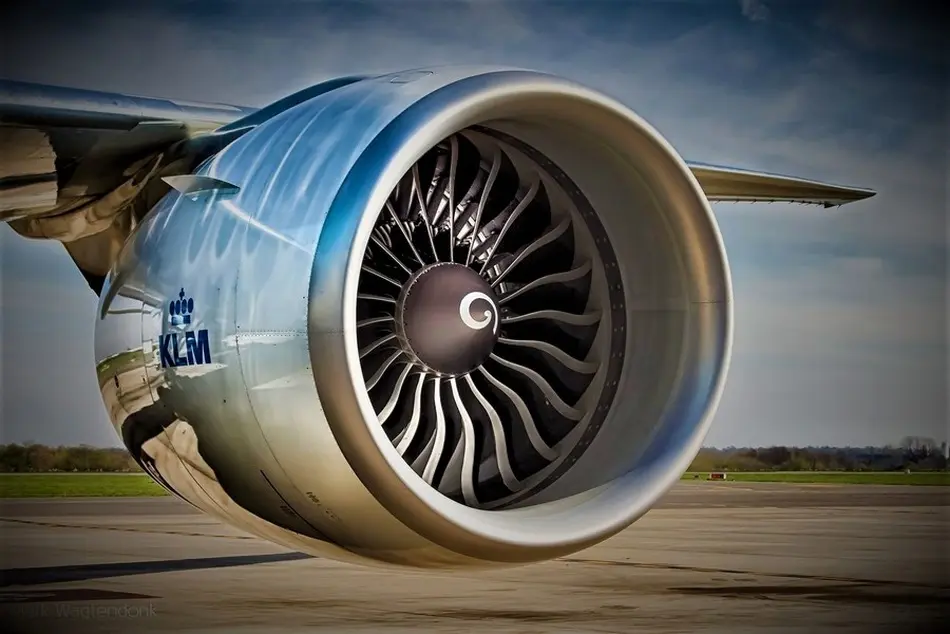MRO Issue May Explain Cathay A350 Engine Incident
The rupture of a Rolls-Royce XWB-97 fuel hose that led a Cathay Pacific Airbus A350-1000 crew to shut down the affected engine and return to Hong Kong Sept. 2 appears to be linked to a maintenance procedure, details released by the European Union Aviation Safety Agency (EASA) investigators, and the manufacturer show.

The rupture of a Rolls-Royce XWB-97 fuel hose that led a Cathay Pacific Airbus A350-1000 crew to shut down the affected engine and return to Hong Kong Sept. 2 appears to be linked to a maintenance procedure, details released by the European Union Aviation Safety Agency (EASA) investigators, and the manufacturer show.
A Hong Kong Air Accident Investigation Authority (AIAA) preliminary report on the serious incident released Sept. 19 confirms a secondary fuel manifold hose on Cathay Pacific flight CX383’s No. 2 Rolls-Royce XWB-97 engine ruptured, “evidenced by a discernible hole in the hose.” Damage to five other secondary fuel hoses was also discovered.
Investigators also found black soot in the engine core’s aft section and burn marks on the underside of two thrust reverser cowls, suggesting an engine fire.
AIAA’s report does explain what may have caused the hole, but a Sept. 19 EASA airworthiness directive (AD) links the incident with warnings of a “suspect” maintenance procedure that may have been used on multiple Trent XWB variants.
“In-service and in-shop inspections have identified that a specific cleaning process available during engine refurbishment may lead to fuel manifold main fuel hose degradation,” the EASA AD said.
The directive replaces an emergency AD issued Sept. 5 in response to the Cathay incident that ordered one-time inspections of Trent XWB-97s, which power A350-1000s.
The new directive specifies the “suspect” maintenance procedure was applied to Trent XWBs that power A350-900s. It requires checks of XWBs that have had at least one engine shop visit within seven days, and repetitive checks every 2,000 flight hr.
Rolls, which services Trent XWBs on Cathay’s fleet of 48 A350-900s and -1000s under its TotalCare maintenance program, suggests the problem may be more limited.
“To support the ongoing investigation following flight CX383, we have agreed with EASA to instruct a small number of our customers to carry out precautionary inspections of high-pressure fuel hoses on a limited number of Trent XWB-84 engines” found on A350-900s, the company said in a statement. The checks “are being prioritized based upon the life of the engine and those that have visited a specific MRO facility,” Rolls added.
Rolls did not name the facility, nor did EASA or AIAA reference any specific overhaul shops. Hong Kong, where Cathay is based, is home to one shop with XWB overhaul capabilities—Hong Kong Aero Engine Services Ltd, a joint venture of Hong Kong Aircraft Engineering Company Limited and Rolls.
Rolls has since ordered overhaul facilities to stop using the procedure, EASA’s AD said. It also developed recommended inspection procedures for affected engines. EASA’s directives are based on the Rolls procedures.
AIAA’s report emphasizes that the probe is in its early phases.
“A comprehensive examination and analysis of the retained aircraft parts, including the secondary fuel manifold hoses in question, is being conducted at an overseas testing facility, with AAIA investigators present to oversee the activities,” the report said.
Among the unanswered questions: why a questionable procedure was being used on Rolls engines in a Rolls-approved facility, and why EASA’s emergency directive targeted only one of the potentially affected engine variants.
CX383 departed Hong Kong for Zurich at 00:24 local time Sept. 2 with 332 passengers and 16 crew, the AAIB report said. Within less than 1 min., the flight crew received a No. 2 engine fire warning. The pilots immediately followed the Electronic Centralized Aircraft Monitor procedures and shut the No. 2 engine down. The fire warning was cleared in less than 1 min.
The flight crew initially declared a MAYDAY, or life-threatening emergency. The pilots then downgraded their status to a PAN, or urgent but not life-threatening situation. They coordinated with local air traffic control, jettisoned fuel to meet landing weight limits, and landed safely at just after 01:40. None of the occupants were injured.
“This serious incident illustrates the potential for fuel leaks through the ruptured secondary fuel manifold hose, which could result in engine fires,” AAIB said. “Therefore, swift action is warranted.”